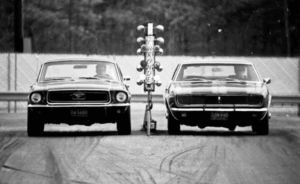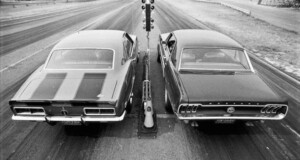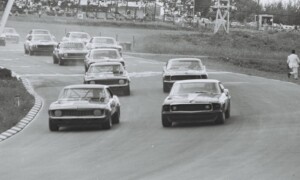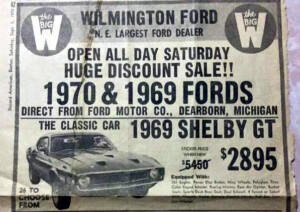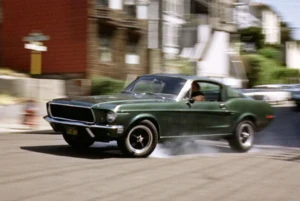Battle of the Pony Cars: Camaro vs. Mustang
The battle between the Ford Mustang and the Chevrolet Camaro is the biggest, most lasting rivalry in American car history. These two cars didn’t just fight for customers; they created an entirely new type of vehicle creating an automotive movement: the pony car war. We’re going back to the late 1960s to look at how this fight started, the high-performance vehicles they developed, and the impact the competition had on car culture.
Ford Fires First: The Mustang Arrives
In 1964, Ford launched the Mustang and immediately changed the car market. This was the first pony car. The formula was simple: a stylish, sporty design with a long hood and a short rear deck. Crucially, it was built on the mechanical platform of the basic Ford Falcon, which kept the price low and made it affordable. Ford’s timing was perfect, hitting the market just as younger buyers were looking for something exciting. The Mustang sold in massive numbers right away, proving there was a huge demand for a personal, sporty, and inexpensive car.
Chevy’s Counterattack: The Camaro’s Introduction
Ford’s rivals couldn’t let them keep all the profits. General Motors, specifically Chevrolet, had to create a direct competitor. Their answer was the Chevrolet Camaro, which hit the market for the 1967 model year. When reporters asked what the name “Camaro” meant, Chevy gave a legendary answer: “a small, vicious animal that eats Mustangs.” The Camaro was built on GM’s F-Body platform, sharing parts with the Chevy II/Nova. It was designed to match the Mustang in size, style, and options, ensuring the fight was on from day one.
The Performance War: Built for the Track
The real excitement started with the performance. Both companies used Trans-Am road racing as a testing ground, which pushed them to build extreme versions of their pony cars for the street. This led to a furious “horsepower war” where factory-available options became incredibly potent.
- The Mustang’s Fighters: Ford created the Boss 302 Mustang specifically to beat the Camaro on the Trans-Am track. It used a specialized, high-revving 302 cubic-inch V8 engine. For buyers who wanted pure straight-line speed, Ford offered the big-block 428 Cobra Jet engine in the Mach 1 and the powerful Shelby GT500 models.
- The Camaro’s Weapons: Chevrolet’s legendary track car was the Z/28 Camaro. Its high-performance 302 V8 was made to handle high speeds and hard driving on road courses. For sheer muscle, the SS 396 Camaro delivered big-block power. In a few rare cases, Chevrolet built the ultimate drag racing machine: the COPO 427 Camaro, which stuffed an enormous V8 into the small car.
Different Goals: The Cars’ Core Philosophies
The Mustang and Camaro were built with slightly different ideas about what a pony car should be.
The Mustang focused on being highly flexible and appealing to the masses. It balanced good performance with great style, making it easy for a huge number of buyers to get into. Ford saw the Mustang as a blank canvas: a car that could be anything the owner wanted it to be, from a basic six-cylinder commuter to a high-powered race replica.
The Camaro was generally positioned as the purer performance choice. While it still sold many lower-end models, Chevy often engineered its high-performance models (like the Z/28) to have better structure, better handling, or stronger suspensions. It was often trying to outdo the Mustang by focusing on the serious driver.
The Sales Verdict: The Mustang’s Early Lead
Despite the Camaro’s focus on performance, the Mustang clearly won the initial battle for buyers. From 1967 through 1969, the Mustang consistently sold much better than the Camaro, often doubling its rival’s sales volume. For example, in 1967, Ford sold around 472,000 Mustangs, while Chevy sold about 220,000 Camaros. This shows that Ford’s strategy of marketing the car to the broader public was highly successful, capturing the majority of the market before the Camaro could catch up.
Cultural Icons: Starring on the Big Screen
Both cars became cultural icons, partly due to their screen time in movies. The Mustang gained worldwide fame in the 1968 film Bullitt. The long, thrilling chase scene featuring Steve McQueen driving a dark green 1968 Mustang GT Fastback set a standard for car action that both Hollywood and builders still follow. The Mustang also appeared earlier in the 1964 James Bond film Goldfinger.
The Camaro didn’t have a signature 1960s film role, but its image was cemented for modern audiences when it starred as the robot Bumblebee in the Transformers film series, ensuring its look and legacy continued for new generations.
Clarifying the Terms: Pony Car vs. Muscle Car
It’s helpful to remember the difference between a pony car and a muscle car. A pony car was originally a small, affordable, and sporty car. A muscle car (like a Chevelle or a GTO) was a larger, mid-size car that had a huge, powerful engine dropped into it.
However, the competition blurred these lines. The ultimate performance versions of the pony cars, like the Mustang Boss 429 and the Camaro ZL1, were so powerful that they definitely became muscle cars, proving that speed and size could sometimes be separate things.
Lasting Influence: A Legacy of Competition
The intense, non-stop fight between the Camaro and Mustang had a major, lasting impact on the entire auto industry. The great pony car war of the 1960s was, ultimately, a win for everyone who loves driving.
- Technology: The rivalry forced both companies to constantly improve engine design, suspension technology, and handling packages. It resulted in faster development of optional performance parts for the public.
- Buyers: It created a deep sense of brand loyalty: a “Ford guy” and a “Chevy guy” that has lasted for decades. Buying one of these cars meant choosing a side in a national feud.
- Culture: The rivalry proved that sporty, fast cars could be successfully sold to the masses, establishing a new and permanent segment in American car design that continues to thrive today.
Enter to win a classic muscle car of your own: RestoMods.com.
Learn about our previous winners here: https://restomods.com/previous-winners
What’s a RestoMod? Read more at What’s a RestoMod
’68 Camaro 454 vs ’22 Supercharged Camaro (Old vs. New Muscle)
Recent Posts
-
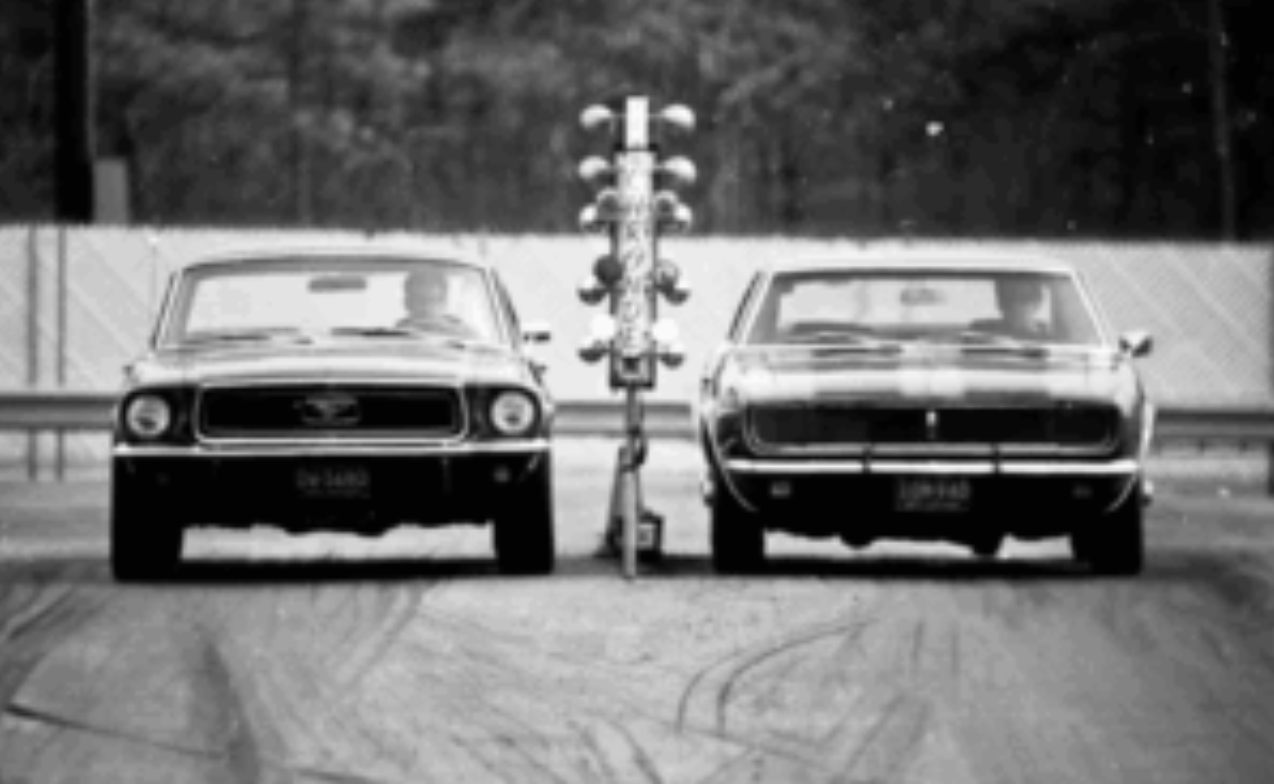
Battle of the Pony Cars: Camaro vs. Mustang
October 29, 2025The battle between the Ford Mustang and the Chevrolet Camaro is the biggest, most lasting rivalry in American car history. These two cars didn’t just…Read more -
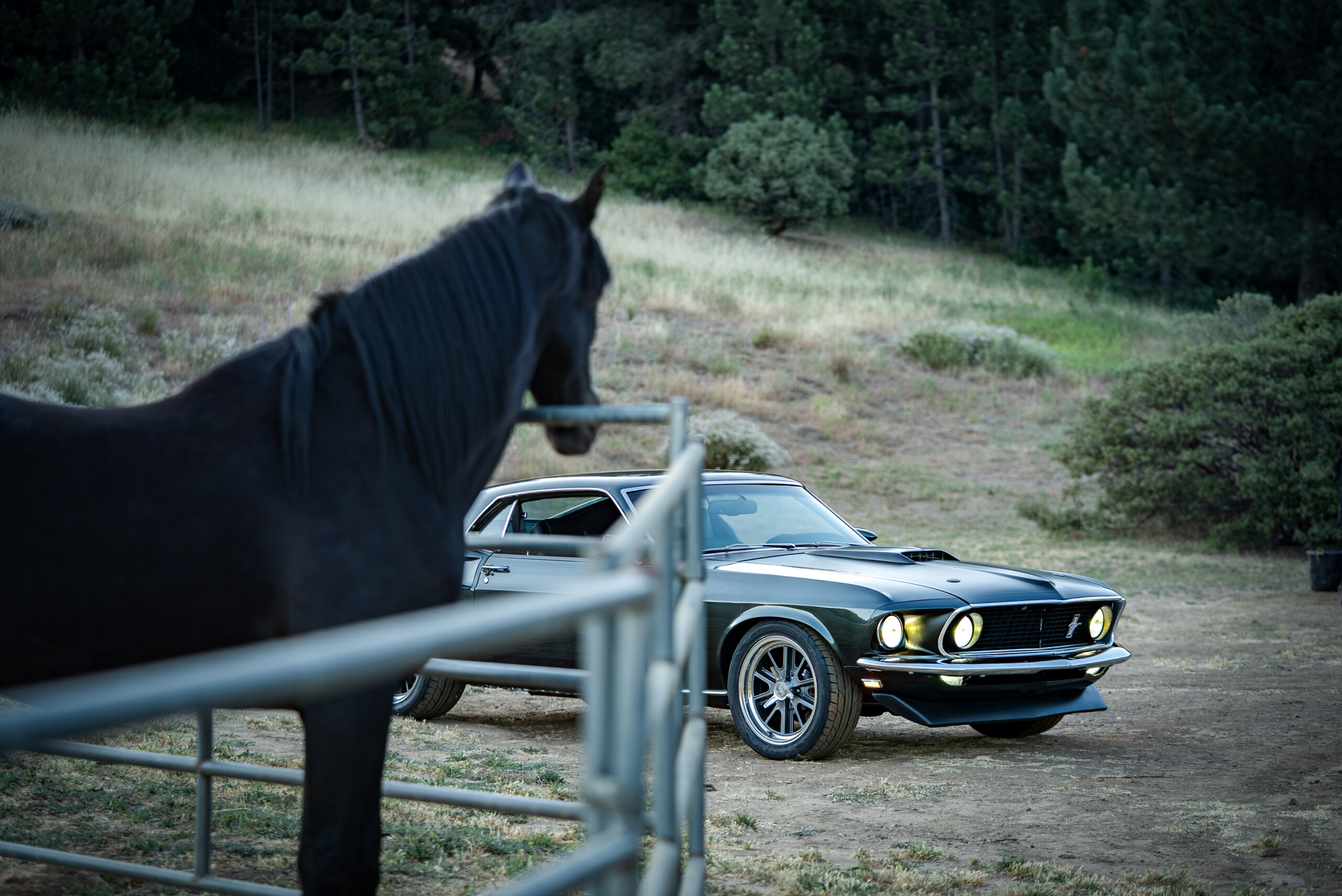
The RM32 Ford Fastback Mustang Build Breakdown
October 24, 2025The Ford Mustang: Historic Start The Ford Mustang is one of the most iconic muscle cars in American history, capturing the imagination of car enthusiasts…Read more -
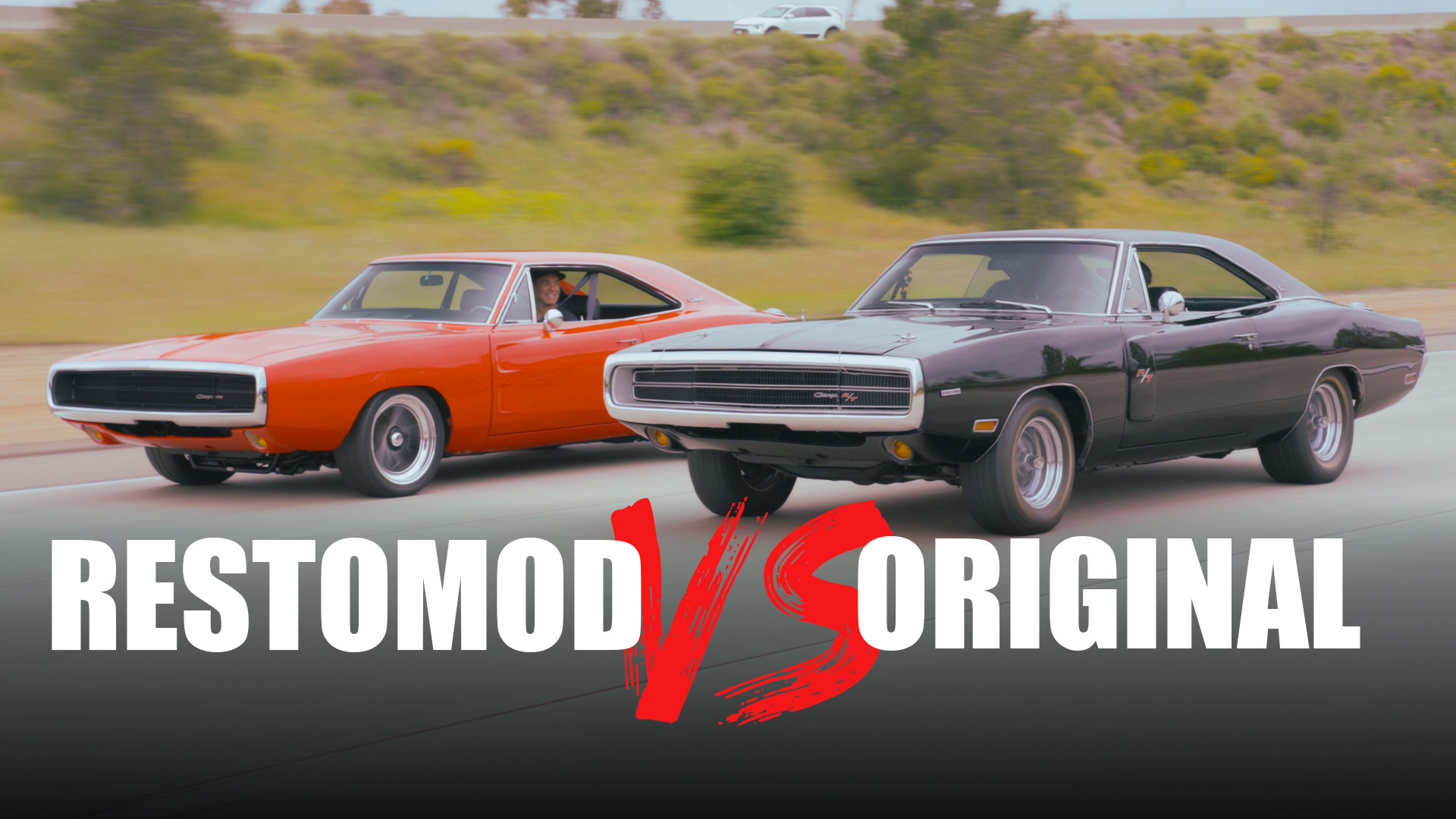
6 Things to Consider: Keep Your Classic Muscle Car Original or RestoMod it?
October 15, 2025When tackling the big question that has become a debate on the internet: Is it better to keep your classic muscle car original or turn…Read more
Become a Car Club Member
Car Club Members Get Entries to Win, Discounts in our Shop, Discounts with our Preferred Partners and more!
Membership benefits
By joining the RestoMods Car Club Today, you will receive amazing perks plus 15 bonus entries into our sweepstakes for every month you are an active member
-
Auto Discounts:Curated Discounts From Your Favorite Parts Companies
-
Restomods Monthly:Monthly Magazine With The Latest Industry News
-
Classified Ads:Get Free Postings seen by 300,000 enthusiasts monthly
-
Car Show Tickets:Check out the biggest vintage car shows on us.
-
Exclusive Car Deals:First chance to purchase any prize cars not selected






Restomods on Instagram
Follow us on Instagram and other networks












